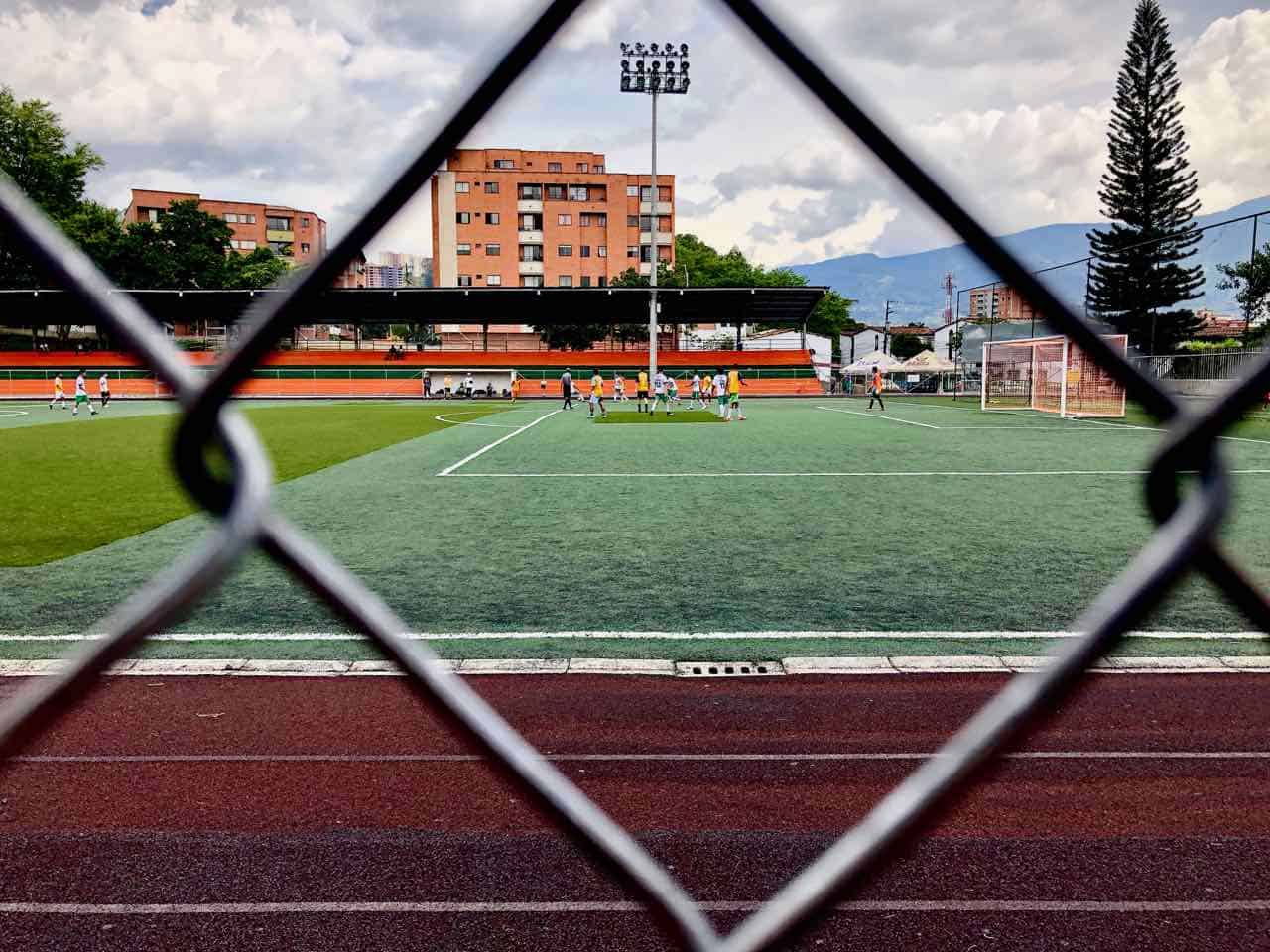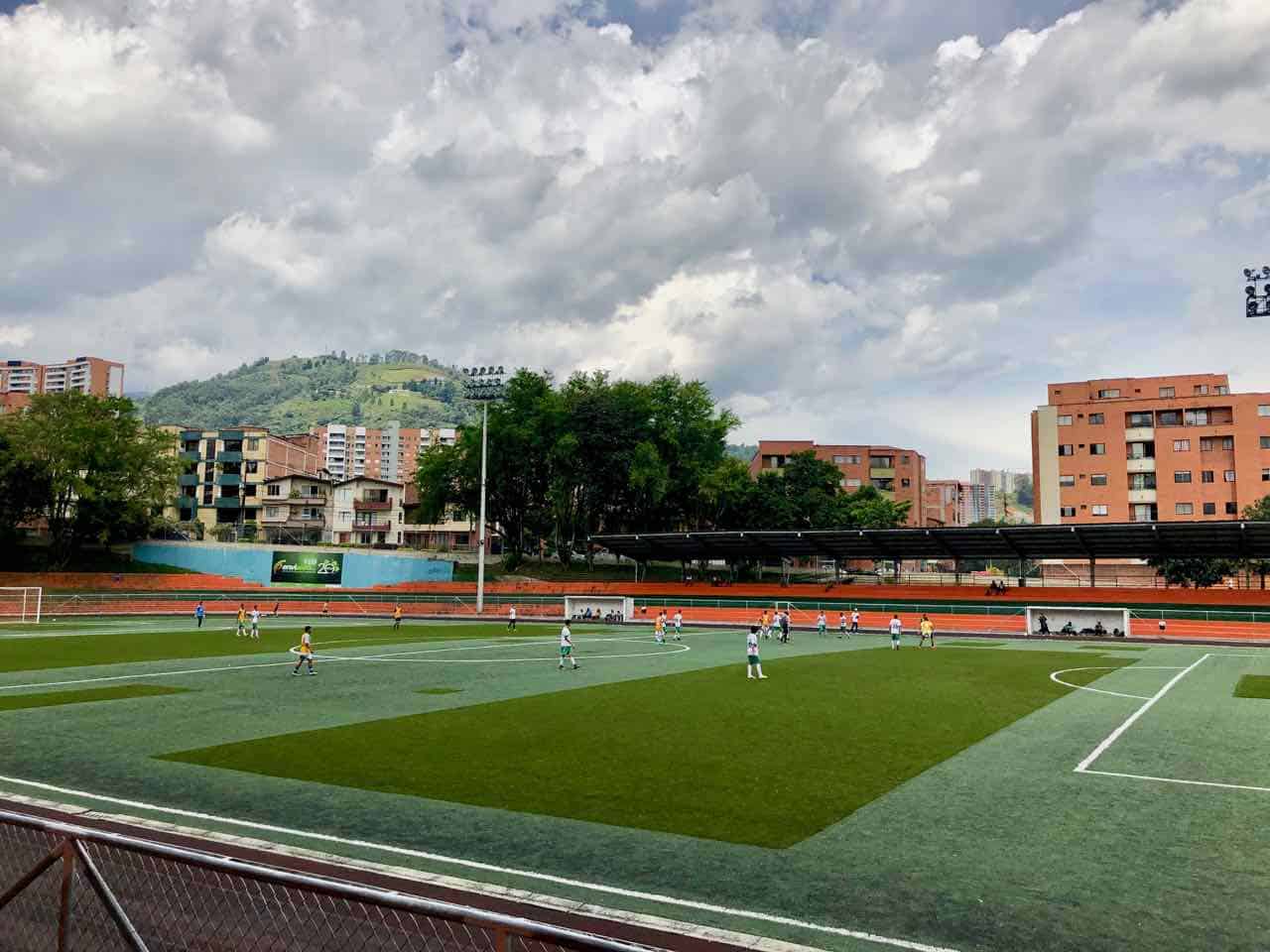Meeting Pablo Escobar’s Brother
Roberto Escobar gave me a once-over with his one good eye. His other eye was blinded courtesy of a letter bomb he received years ago in prison. Approving of me, he spoke to our guide in Spanish, who then ushered me to take pictures with him and ask questions. I was at the Casa Museo Pablo Escobar, a former safe-house turned museum.
Roberto Escobar, Pablo Escobar’s older brother, was the accountant of the Medellín Cartel that supplied about 80% of the cocaine into the United States during the 1980s.

Don’t say his Name
In Medellín, Colombia, even saying Pablo Escobar’s name in most areas is taboo. However, I found that if you search, you will find poorer areas that still celebrate him. Thousands of innocent Colombians suffered through the Cartel war with the government; kidnappings, torture, murder, bombings – nothing was off-limits.

It conflicted me touring places that glorified Escobar’s crimes. But I was curious to understand more of Medellín’s history, and to do so you can’t ignore Escobar. A few days earlier, I went on the “Don’t say his [Pablo Escobar’s] name tour.” The tour takes you to Pablo’s family apartment complex, a soccer field he built for the poor, his gravesite, and La Catedral.
La Catedral, the Luxury Prison
La Catedral was a ‘prison’ that Pablo Escobar had built for himself on top of a hill overlooking Medellín. It included a jacuzzi, soccer field, a helicopter pad, built and paid for by Escobar. Today, monks have taken it over and run an elderly care facility there. Pablo left millions of dollars buried at La Catedral when he fled. Subsequently, treasure hunters have come and go, but it’s unknown if anyone discovered the money.
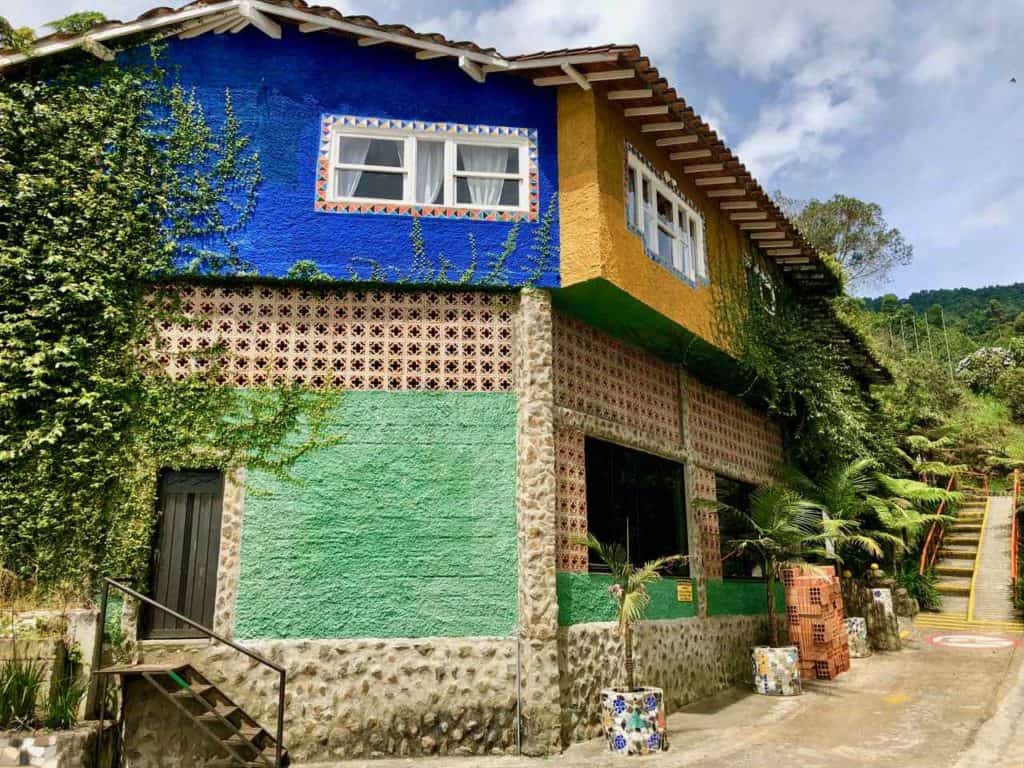
La Catedral is now an elderly care facility. 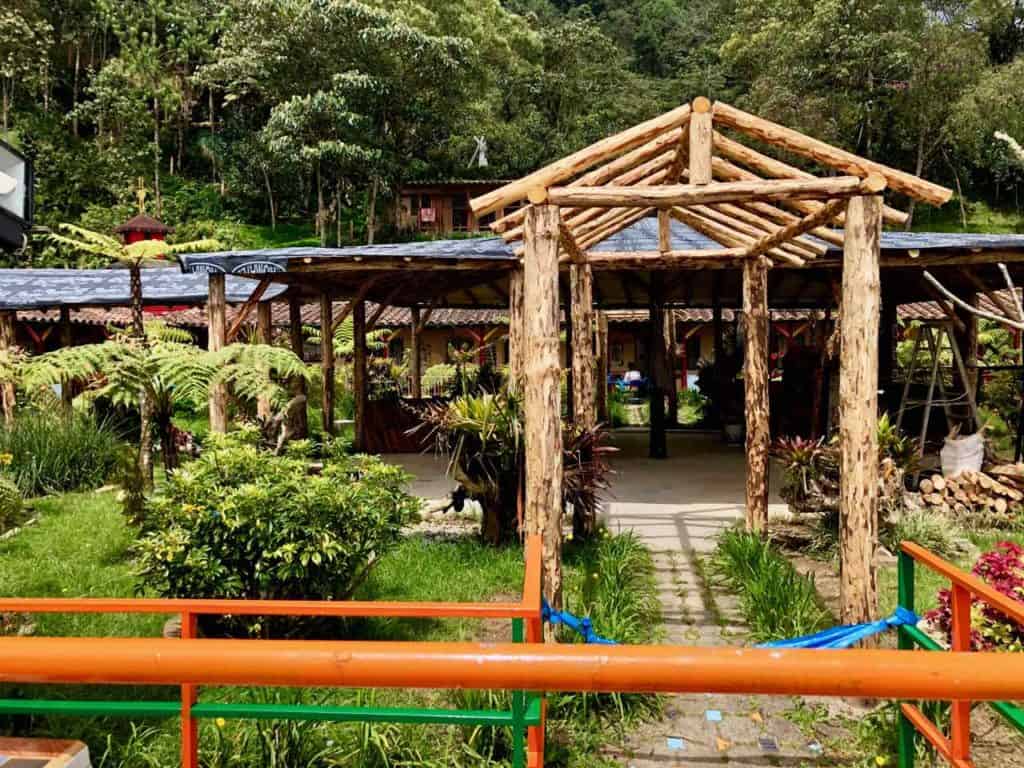
Updated area for the new elderly residents 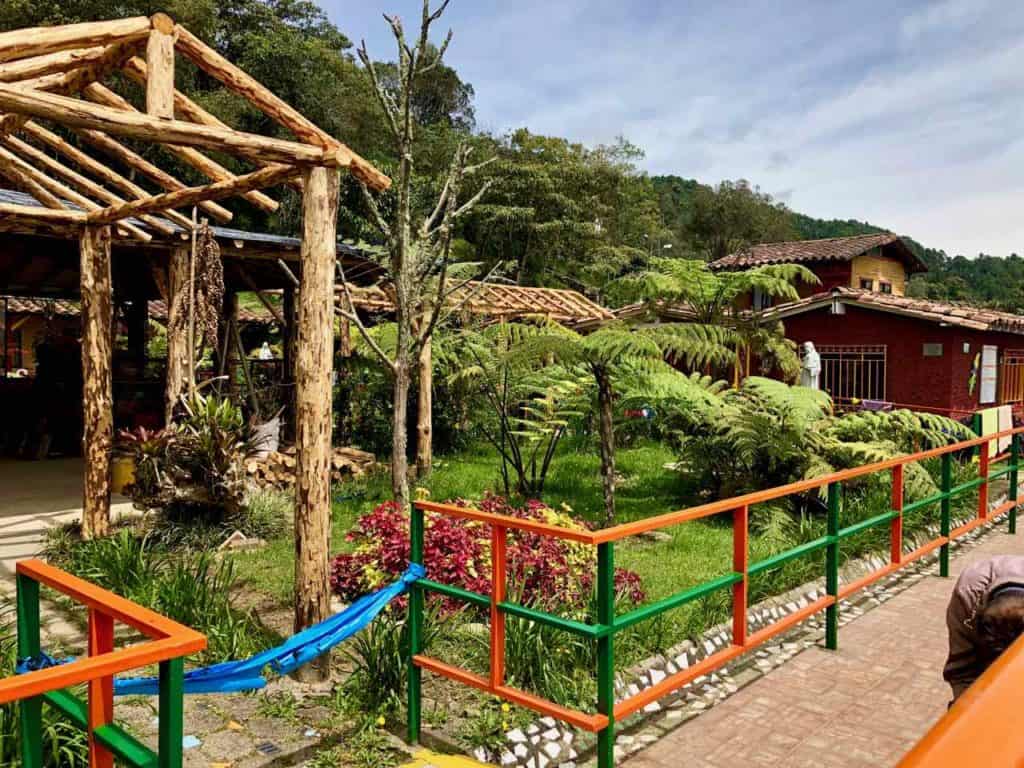
Renovations for the new elderly residents 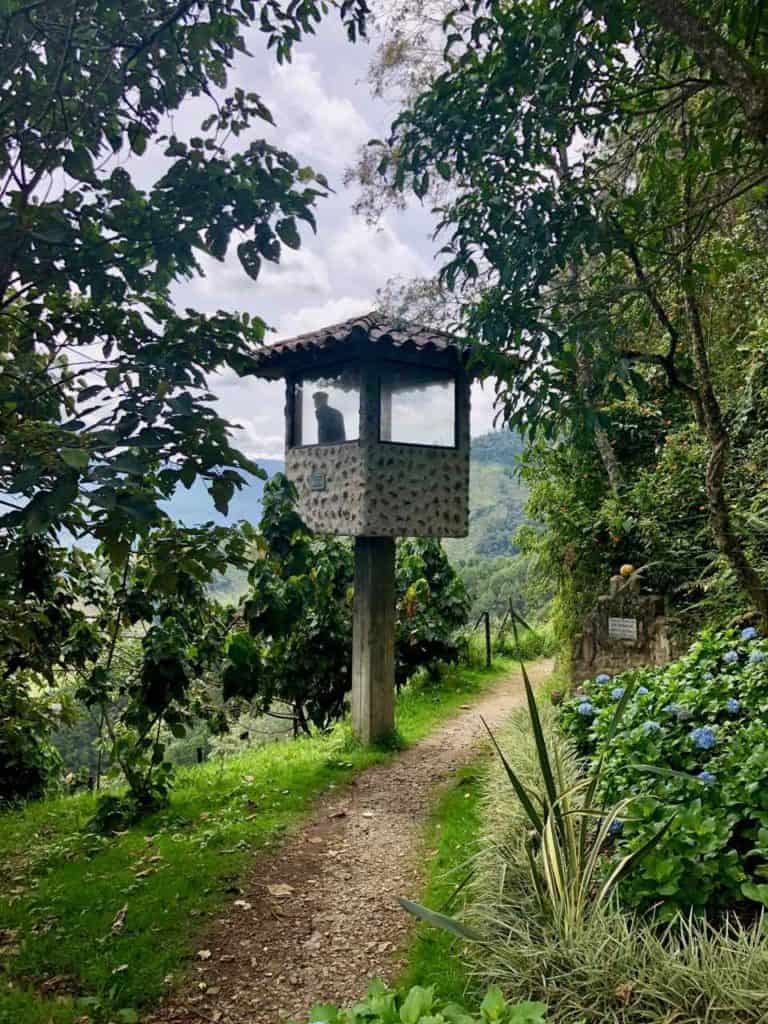
Replica watchtower 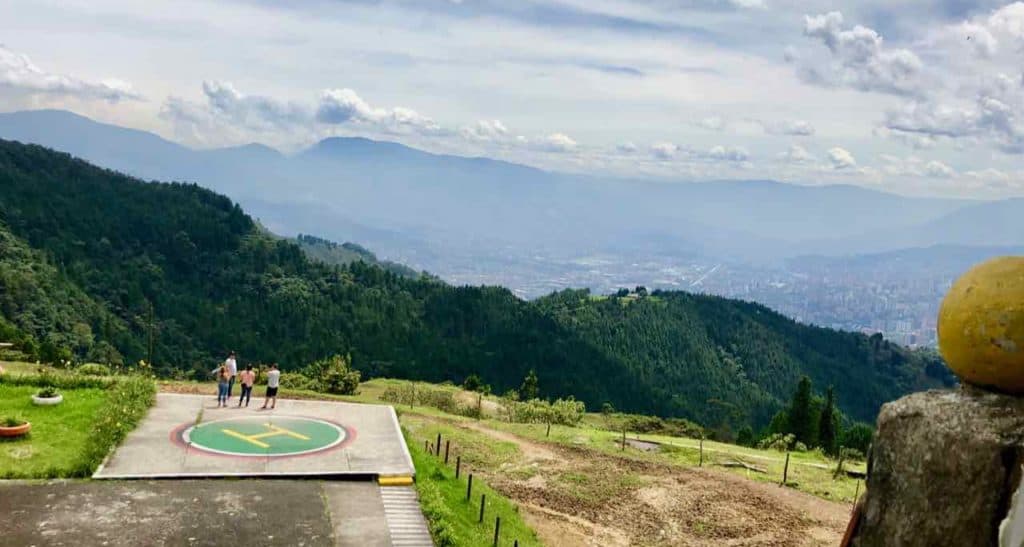
View of the helicopter landing pad and Medellin in the distance
Our guide had walked us over to a spot where Pablo, while technically in jail, allegedly executed two of his lieutenants. I asked the guide his own opinions of Pablo.
“Oh, I hate him. I grew up here in Medellín. I have friends whose fathers worked in the drug trade. Pablo ordered their deaths. He was the most famous – because he was the most ruthless.”
“There weren’t many deaths without his say so,” he continued. I asked him, are you conflicted guiding the ‘Don’t say his name tour’? “I still need to make money,” he responded, “and I can share with you the truth, rather than the fantasy they sell you on TV.”

Treasures left behind by Pablo Escobar when he fled La Catedral 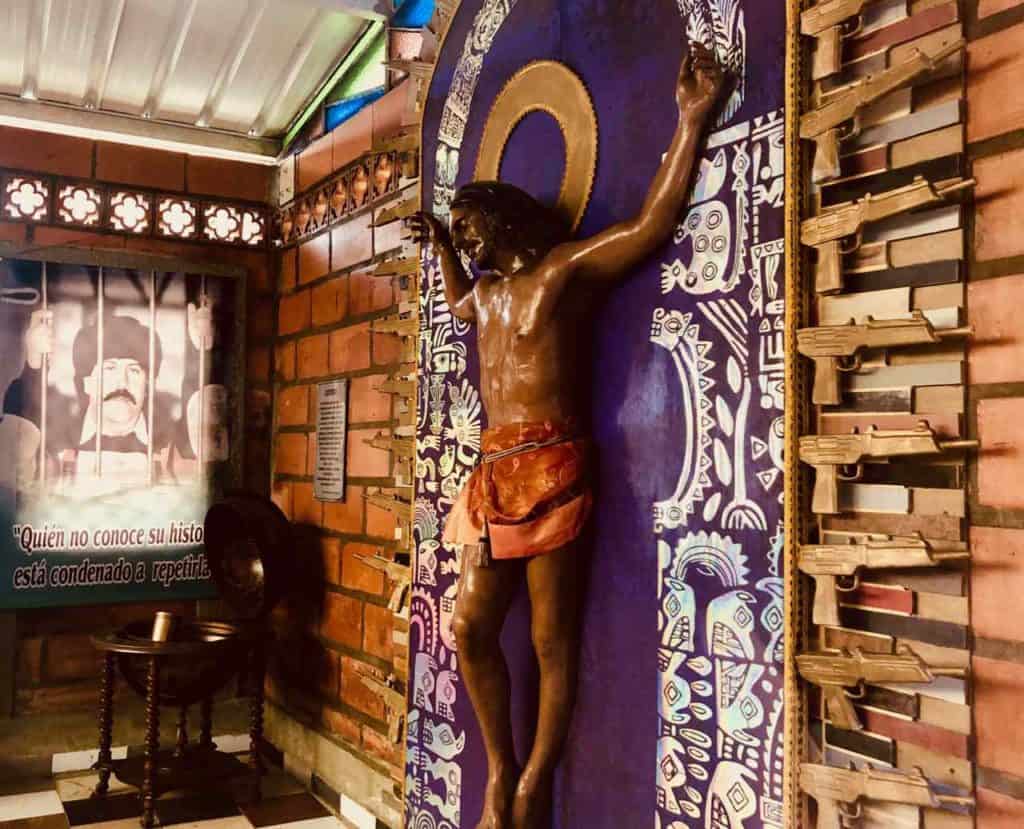
Jesus on the cross, surrounded by guns, left behind by Pablo Escobar when he fled the prison
Casa Museo Pablo Escobar
On my last day in Medellín, I and a friend Hayden went to the museum/ safe-house run by Roberto Escobar and his family. The tour guide was very good, he told stories, showed us Pablo’s cars, a jet ski used in a James Bond film, and even hidden passageways in his home used to hide money and evade the police. You end meeting Roberto’s charming daughter and nephew that run the gift shop.
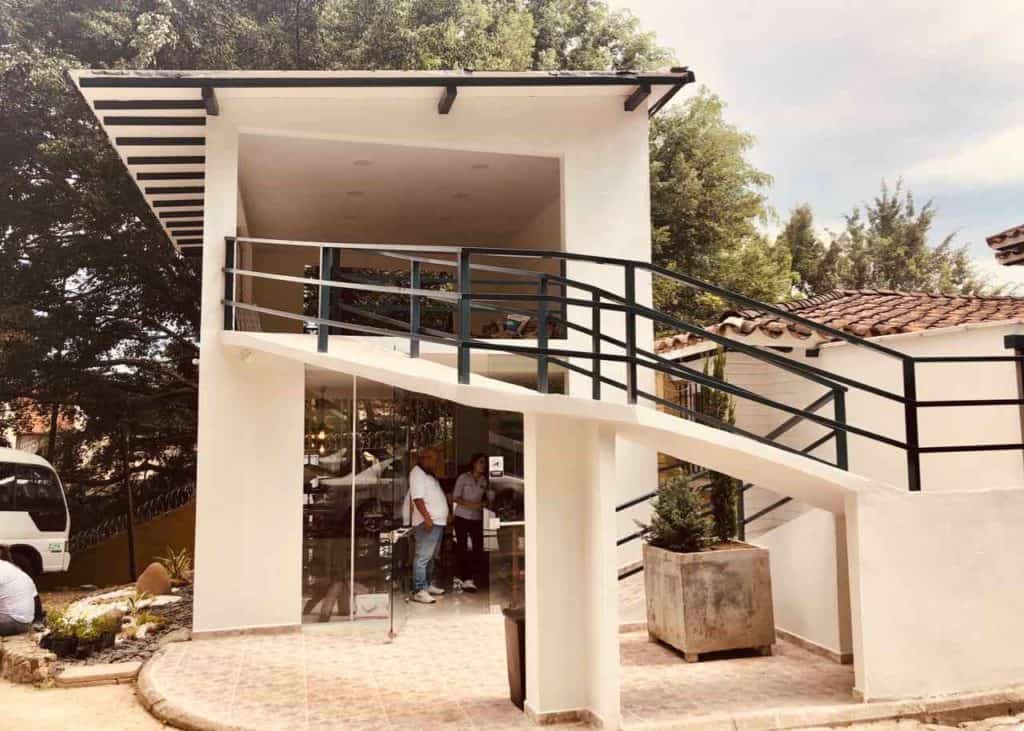
Casa Museo Pablo Escobar – view of gift shop 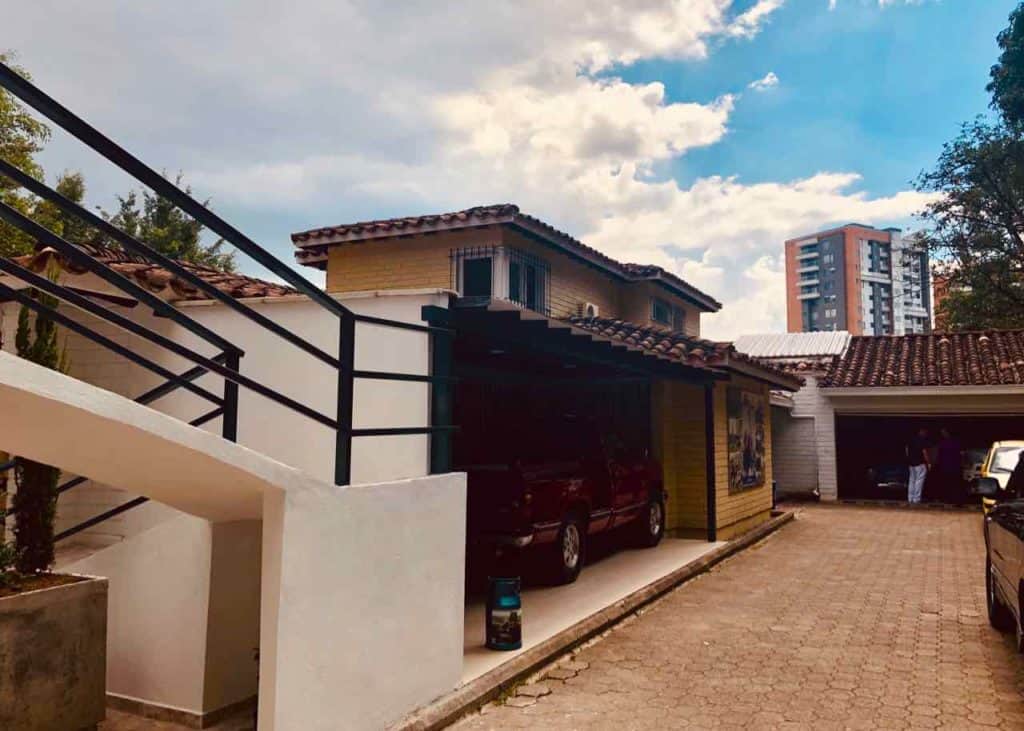
Casa Museo Pablo Escobar – looking toward the home 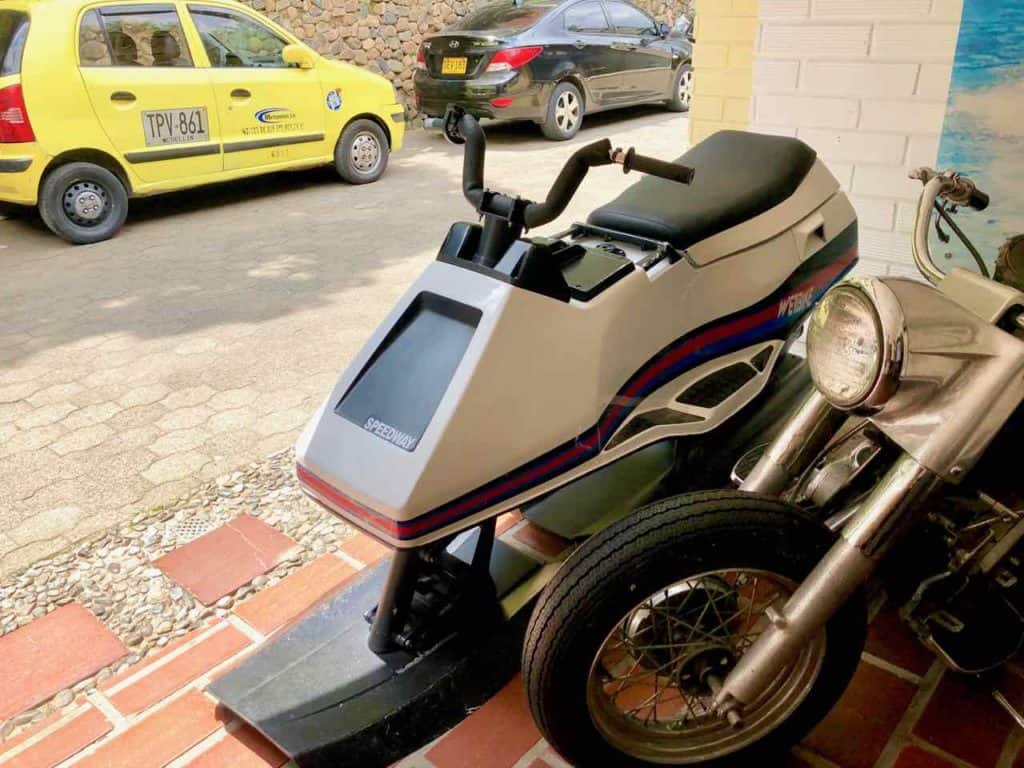
Some of Pablos Vehicles 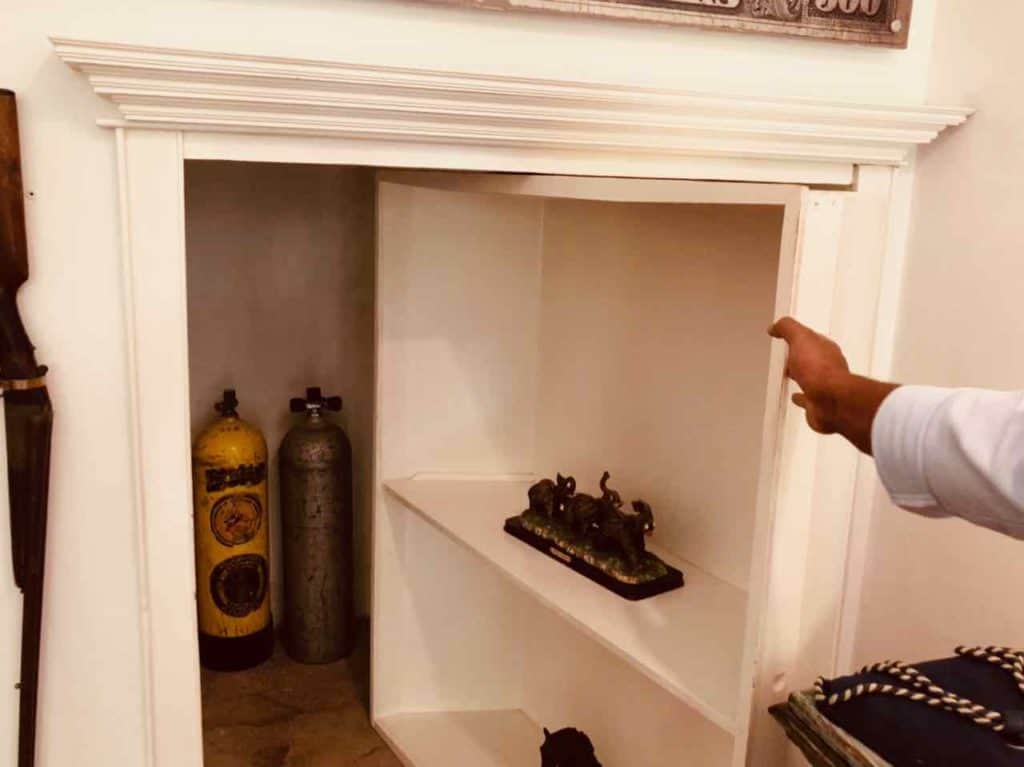
False wall used to hide during police raids 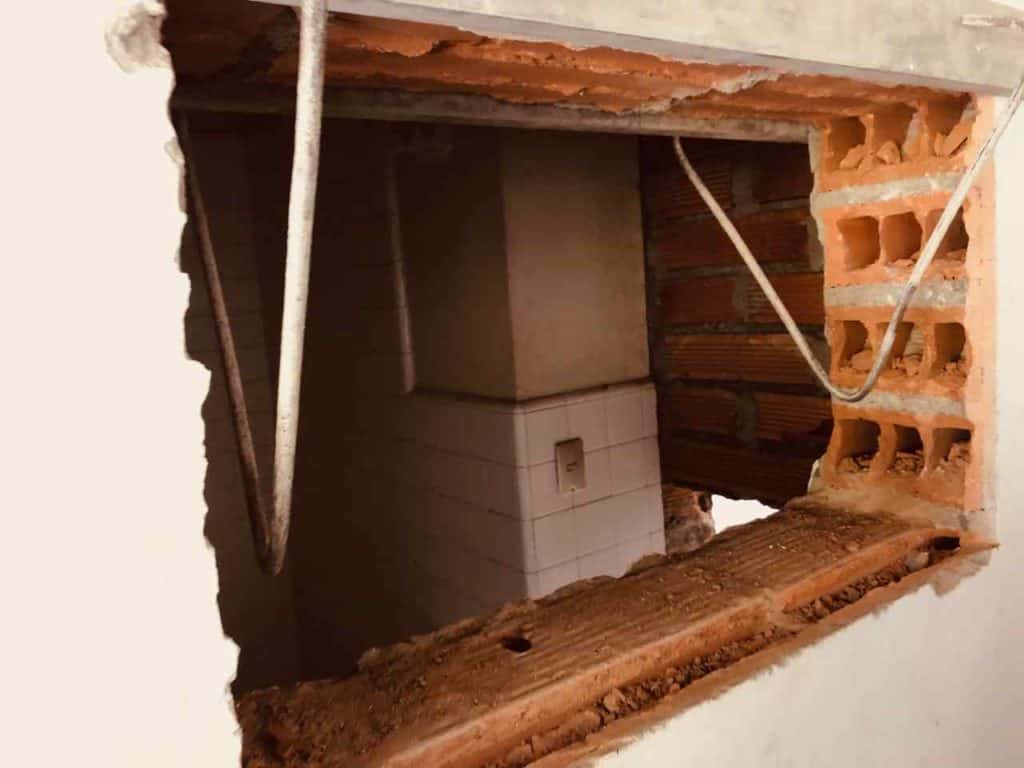
Escape passage hidden in the walls 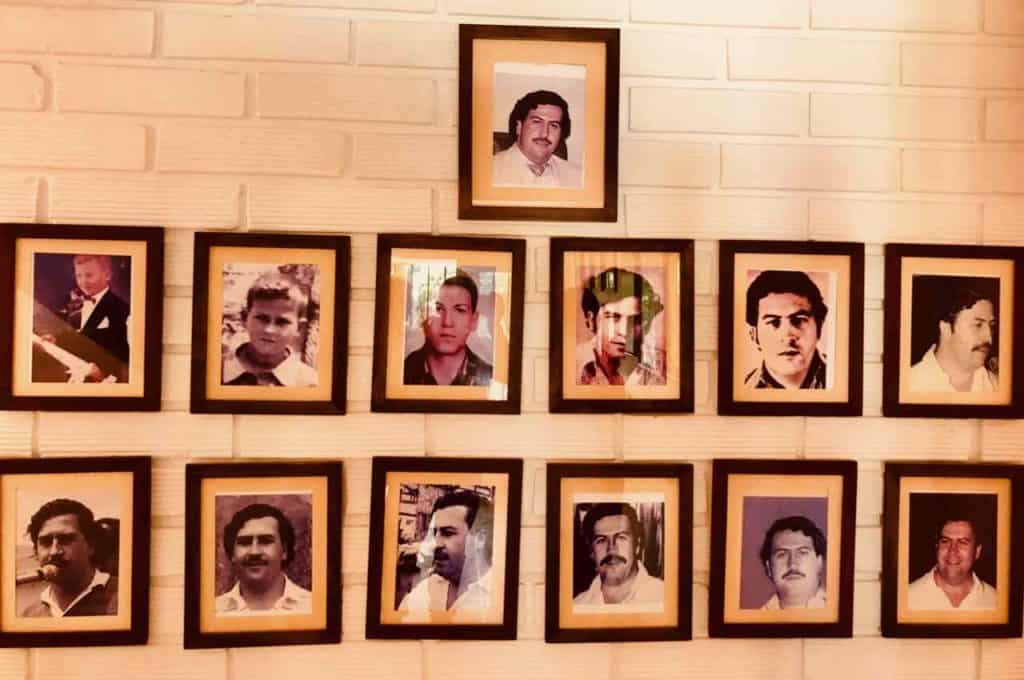
Photos of Pablo Escobar 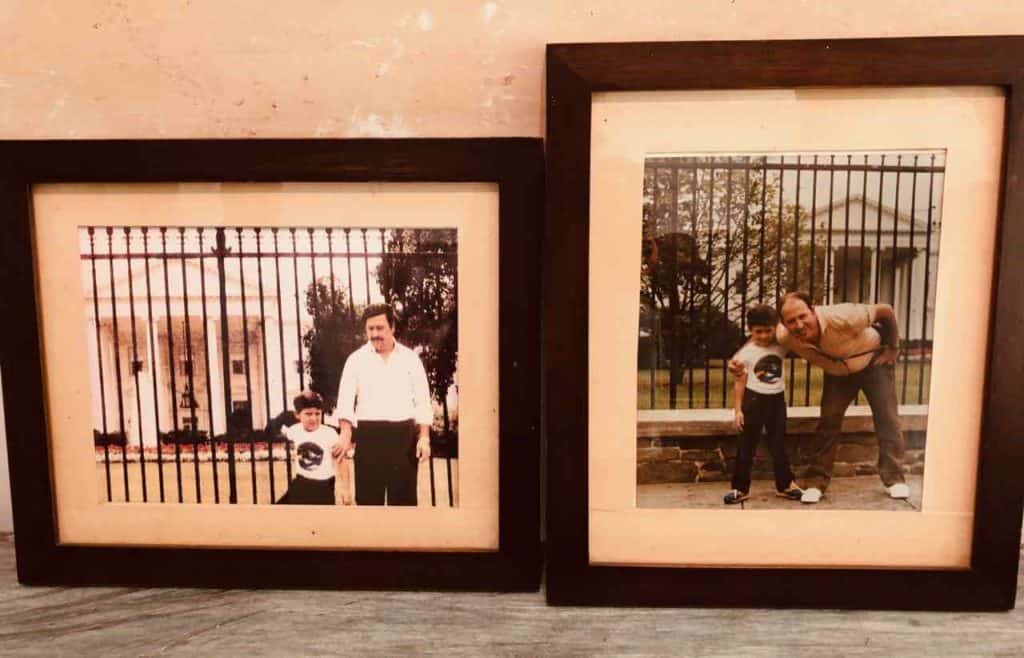
Pablo and Roberto with their sons in front of the White House. These were taken while they were on the FBI most wanted list. 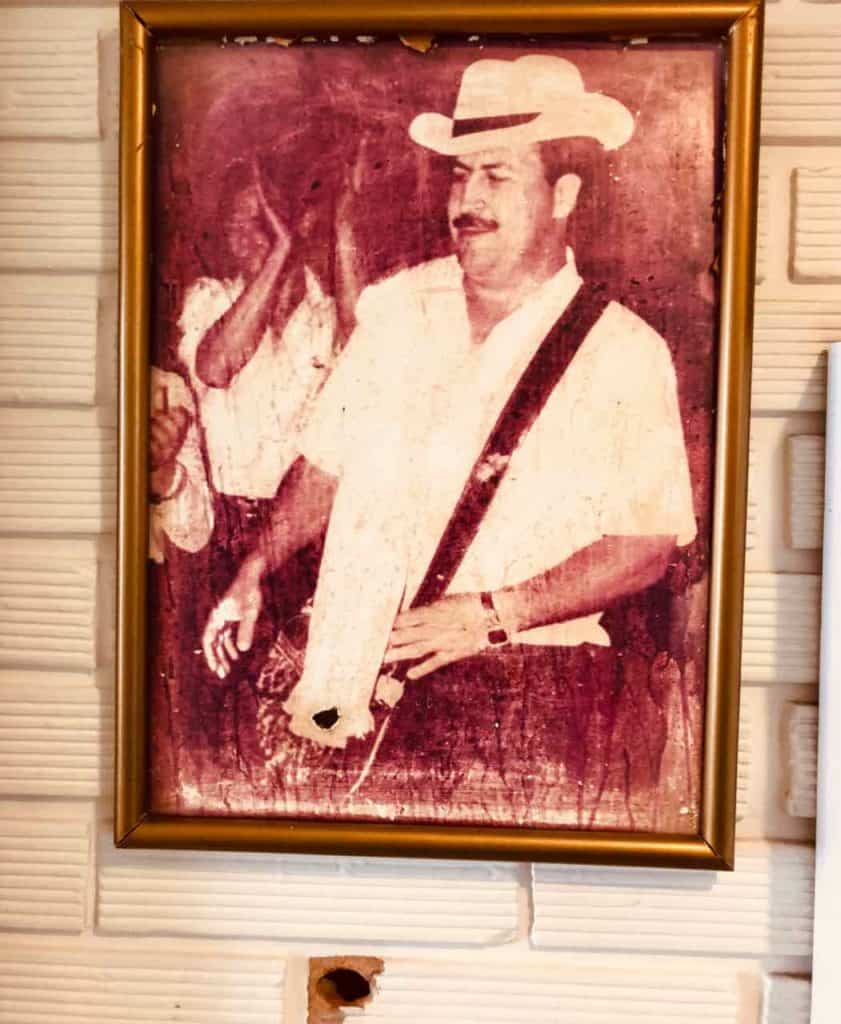
Bullet holes in a picture of Pablo Escobar and the wall courtesy of a police raid
Roberto and the tour guide shared inaccuracies of the popular Netflix series Narcos, which depicts the life and times of Pablo Escobar. They explain that Roberto did not give his consent to the series and thus is not depicted. Their stories had a clear focus on painting the government and police as corrupt, even showing you bullet holes in the museum-house from police raids.


It hit me – I was talking to the infamous Roberto Escobar. This frail but gruff 70-year-old man and his brother had a profound impact on our modern history. We spoke briefly about his brother, the museum, and modern Colombia. I said goodbye to Roberto, as he went for a nap, and our tour had ended.
The Accountant’s Story

I have just recently read Roberto’s book, the Accountant’s Story, a behind the scenes look at himself and Pablo. It details the rise and fall of the cartel; their drug smuggling, money laundering, their families, fast lifestyles and women.
You won’t find many apologies for their crimes in his book. Some parts seem exaggerated, but there is a lot of truth and you won’t find that in sensational Hollywood movies or TV shows.
|
Do you plan on visiting Colombia? What are your thoughts on Narco tourism? Let me know in the comments below.
– amo
Casa Museo Pablo Escobar
Website | Map
Medellín, Colombia
Visited: Wednesday June 20, 2018
